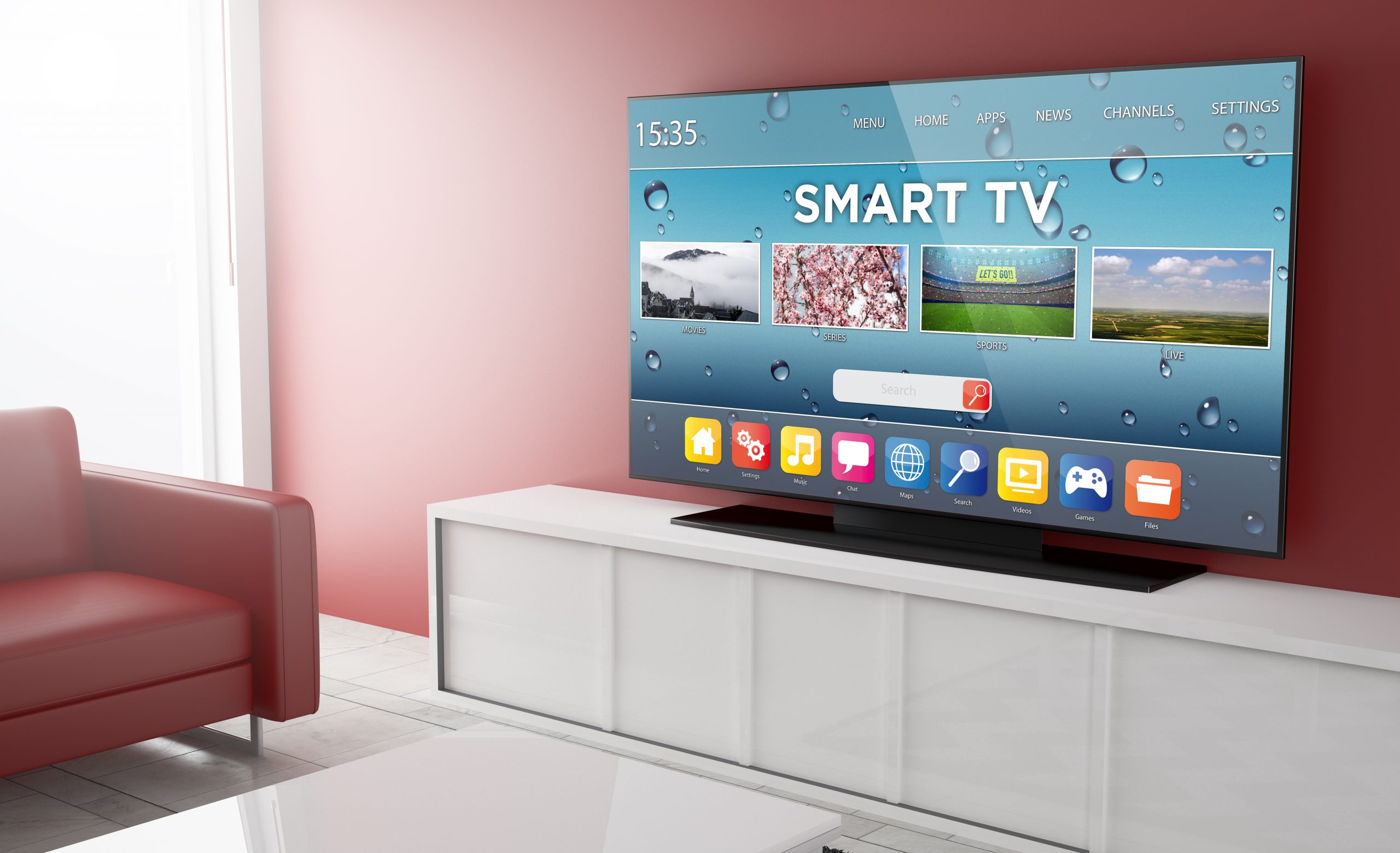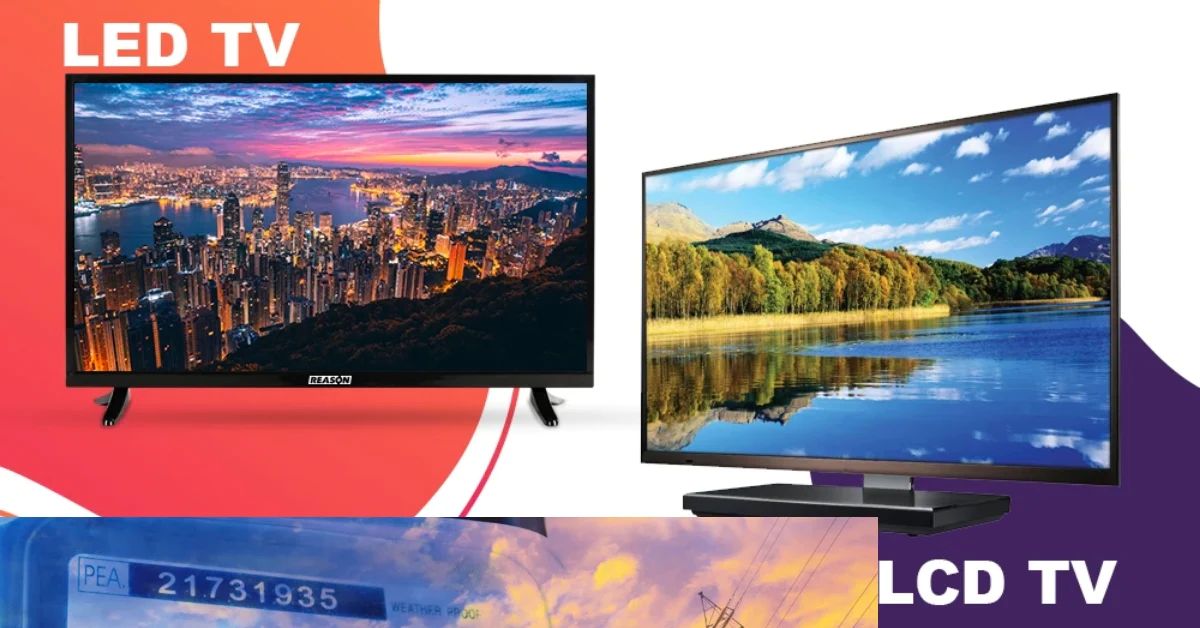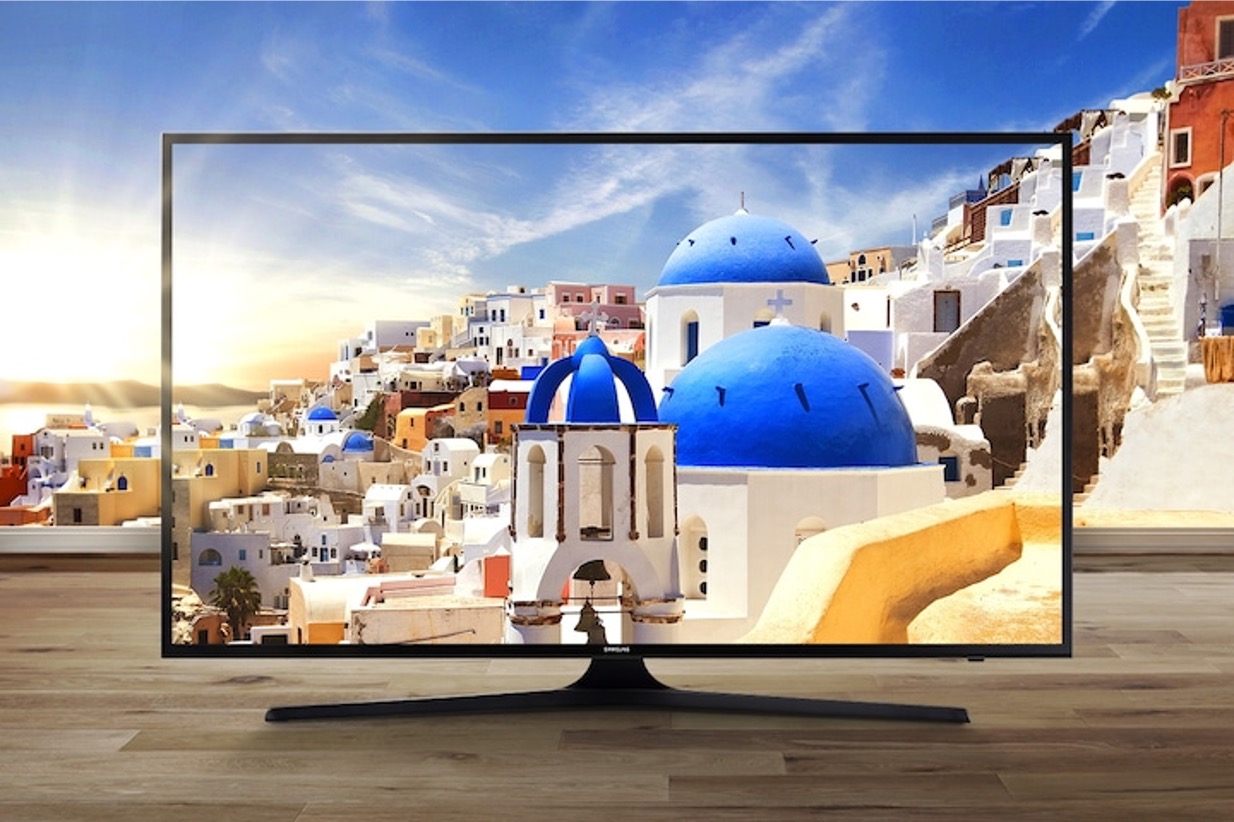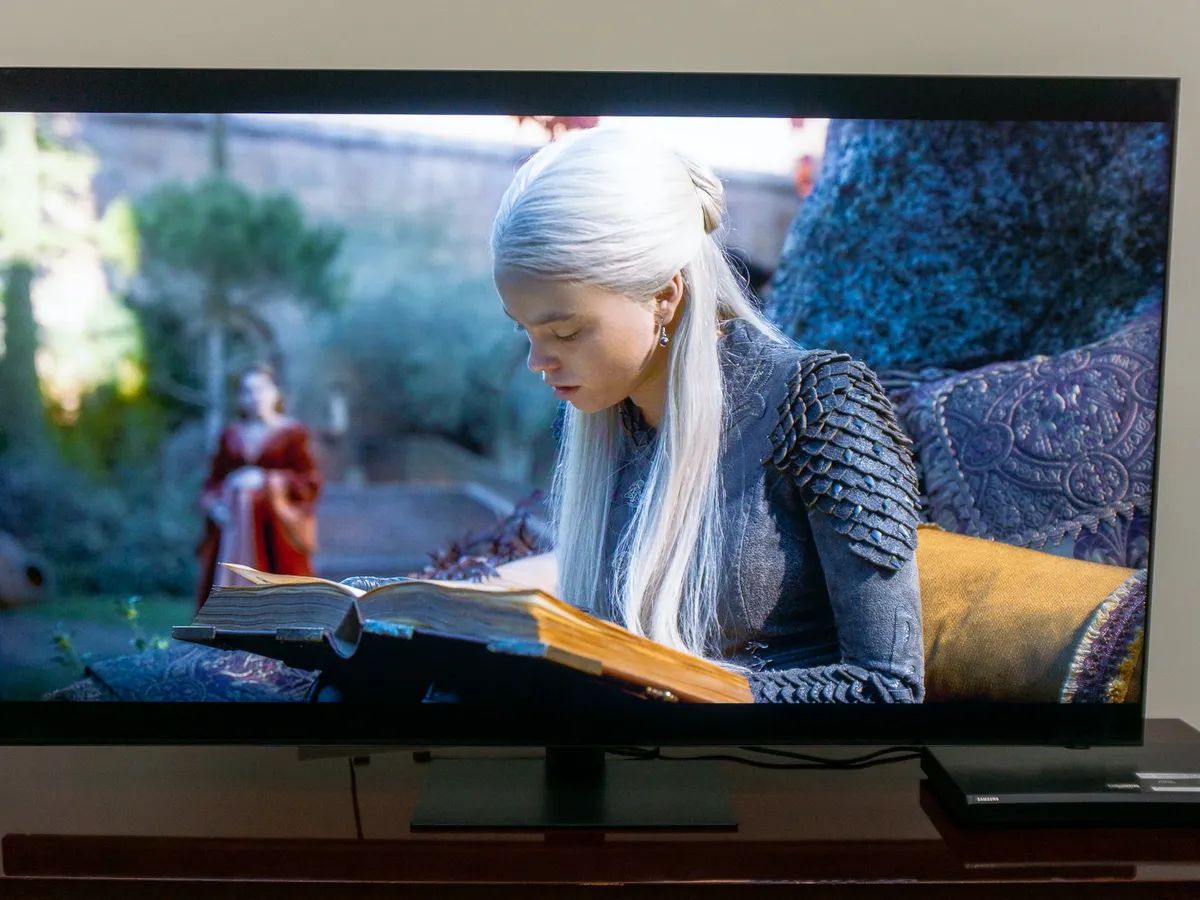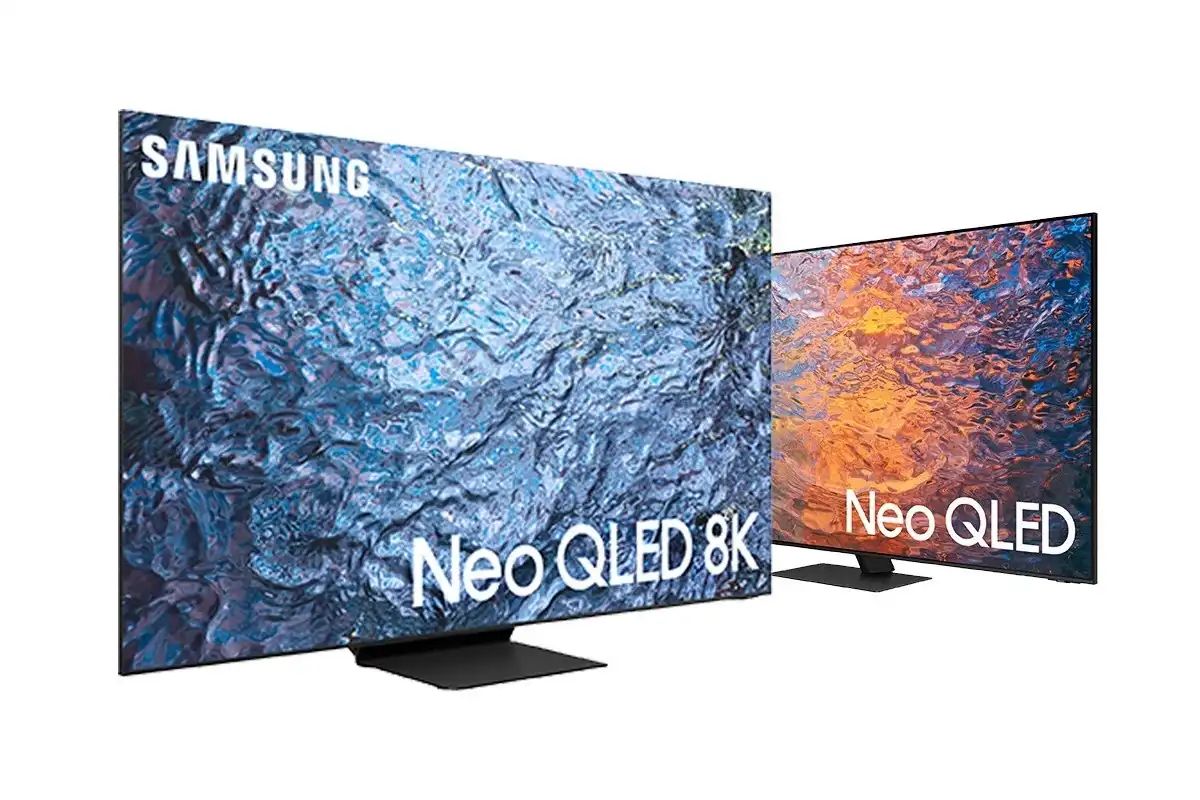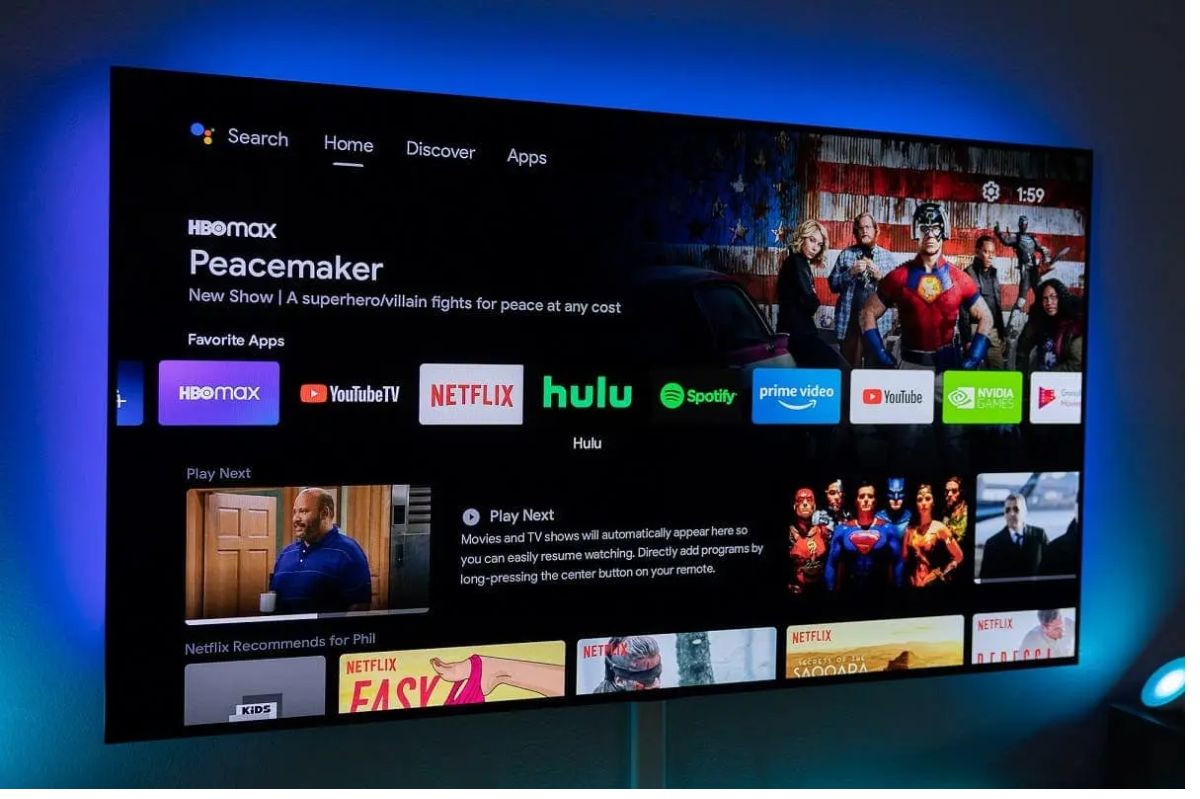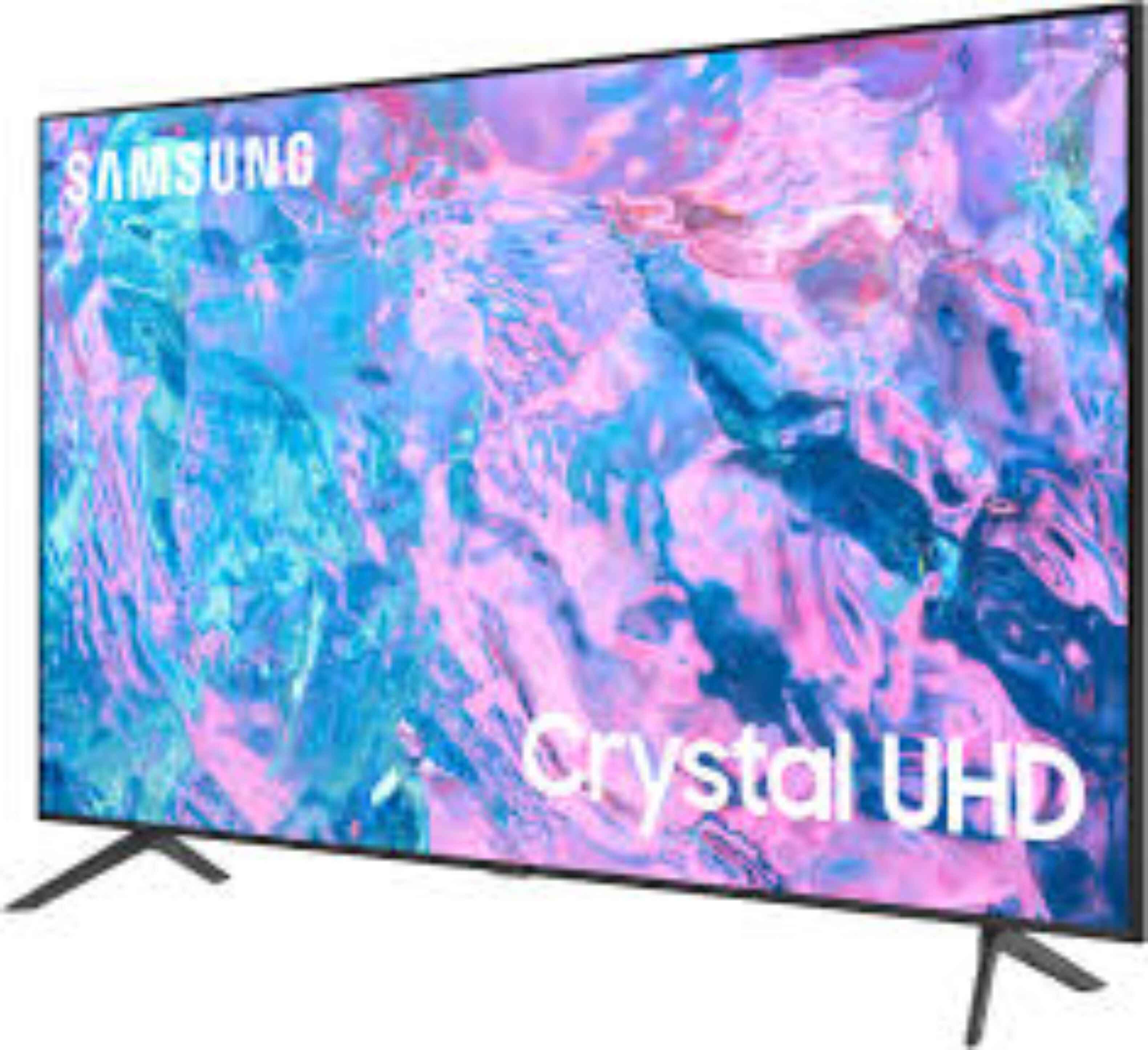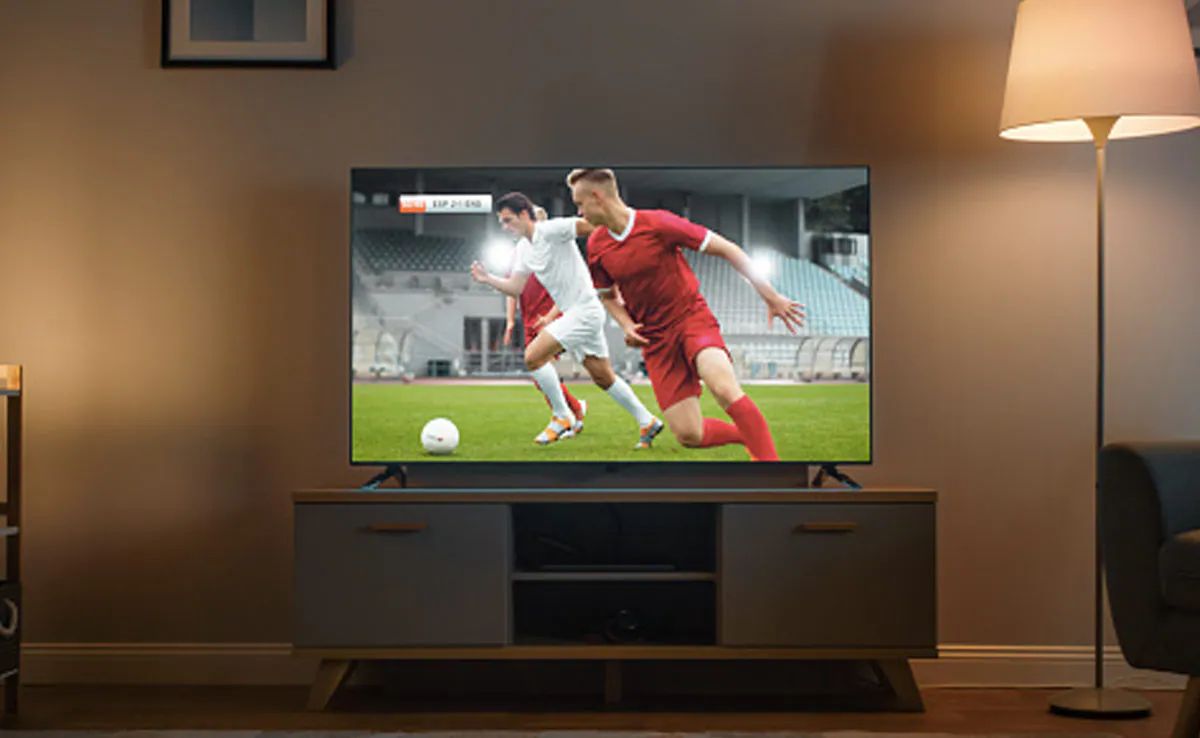Introduction
Welcome to the world of smart entertainment! With the rapid advancements in technology, traditional LED TVs can now be transformed into smart TVs, offering a wide range of exciting features and capabilities. In this article, we will explore the process of turning your LED TV into a smart TV, empowering you to access a world of online streaming, video-on-demand services, gaming, and much more.
So, what exactly is a smart TV? Unlike conventional LED TVs, which are primarily limited to playing broadcast television and media from external devices, smart TVs are equipped with integrated internet connectivity and built-in software platforms that offer access to a variety of online content and applications. With a smart TV, you can effortlessly stream movies and TV shows, browse the web, access social media, play games, and enjoy a plethora of interactive features.
There are several benefits to transforming your LED TV into a smart TV. Firstly, it opens up a vast world of entertainment options, giving you access to an extensive library of online streaming services such as Netflix, Hulu, Amazon Prime Video, and many more. You can watch your favorite movies and TV shows on demand, eliminating the need for costly cable or satellite subscriptions.
Secondly, a smart TV allows you to explore a range of interactive features and applications. You can browse the internet, check your emails, stream music, engage with social media, and even download and use various productivity tools and gaming apps. Whether you want to stay connected with friends and family, stay informed about the latest news and trends, or simply enjoy immersive gaming experiences, a smart TV offers endless possibilities.
To transform your LED TV into a smart TV, you will need a few essential requirements. These include a reliable internet connection, an HDMI port on your TV, and a compatible device or platform that will provide the smart functionalities. There are several options available, each with its own advantages and features.
What is a Smart TV?
Smart TVs have revolutionized the way we consume media and interact with our televisions. Unlike traditional LED TVs, smart TVs integrate internet functionality and advanced software platforms, enabling users to access a wide range of online content and applications.
At the core, a smart TV is essentially a television with built-in internet connectivity and an operating system that allows users to navigate and interact with various features and services. This integration of internet capabilities transforms a regular TV into a multifunctional device that offers a seamless blend of traditional television programming and online entertainment.
Smart TVs typically come equipped with a variety of pre-installed applications and services, providing users with instant access to popular streaming platforms, such as Netflix, Hulu, and YouTube. These platforms allow you to stream your favorite movies, TV shows, and videos directly on your television without the need for an external device.
In addition to video-on-demand services, smart TVs also offer access to a diverse range of content and applications. You can browse the internet, check social media updates, listen to music, play games, and even access productivity tools like calendars and email clients. Some smart TVs also provide voice-command functionality, allowing you to control your television with voice instructions.
One of the key benefits of smart TVs is their ability to provide personalized and tailored content recommendations. Using algorithms and machine learning, these televisions analyze your viewing habits and preferences to offer suggestions for movies, TV shows, and other content that you are likely to enjoy. This feature eliminates the need for manual searching and makes it easier to discover new shows and movies aligned with your interests.
Smart TVs are also commonly compatible with various devices and technologies. Many smart TVs support Bluetooth connectivity, allowing you to connect wireless headphones or speakers for a more immersive audio experience. Furthermore, they often have multiple HDMI ports, enabling easy connectivity to gaming consoles, Blu-ray players, and other external devices.
In summary, a smart TV provides a combination of traditional television programming and a range of online content and applications. By harnessing the power of internet connectivity and advanced software, smart TVs bring an unprecedented level of convenience and entertainment options to the living room.
Benefits of Turning an LED TV into a Smart TV
The decision to convert your LED TV into a smart TV comes with a plethora of benefits and advantages. Let’s explore some of the key reasons why transforming your TV into a smart TV is worth considering:
1. Access to a World of Entertainment: By turning your LED TV into a smart TV, you gain access to a vast and ever-expanding library of online streaming services, including popular platforms like Netflix, Hulu, Amazon Prime Video, and more. Say goodbye to traditional cable or satellite subscriptions and enjoy a variety of movies, TV shows, and other multimedia content on demand.
2. Interactive Features and Applications: A smart TV opens up a world of interactive possibilities. You can browse the internet, check your emails, catch up on social media updates, stream music, and download a variety of applications to enhance your entertainment experience. Whether you want to watch YouTube videos, play games, or access productivity tools like calendars and note-taking apps, a smart TV has you covered.
3. Personalized Recommendations: Smart TVs employ advanced algorithms and machine learning to analyze your viewing habits and preferences. This allows them to offer personalized content suggestions, making it easier for you to discover new movies, TV shows, and other content that align with your interests. Say goodbye to manual searching and let your smart TV do the work for you.
4. Elimination of External Devices: One of the advantages of a smart TV is that it eliminates the need for additional external devices. With a smart TV, you no longer need a separate streaming device or media player. All the functionalities are integrated into the television itself, reducing clutter and simplifying your entertainment setup.
5. Convenience and Ease of Use: Smart TVs are designed to be user-friendly and intuitive, providing a seamless and convenient entertainment experience. With a simple remote control or even voice commands in some cases, you can navigate through different applications, switch between TV channels and streaming services, and access your favorite content with ease.
6. Future-Proofing Your TV: Technology is constantly evolving, and a smart TV ensures that your television remains updated and capable of meeting your entertainment needs in the years to come. Software updates are regularly released to improve performance, introduce new features, and fix any bugs or issues, keeping your TV up-to-date with the latest advancements.
Transforming your LED TV into a smart TV offers a host of benefits, from a broader range of entertainment options to personalization and convenience. It’s a smart investment that enhances your entertainment experience and brings the future of television right into your living room.
Requirements to Make LED TV a Smart TV
To transform your LED TV into a smart TV, there are a few essential requirements that you need to consider. Here are the key elements you will need:
1. Reliable Internet Connection: A stable and reliable internet connection is vital to ensure smooth streaming and access to online content. It is recommended to have a broadband connection with a minimum speed of 10 Mbps for optimal performance. Keep in mind that a faster internet connection may be required for streaming high-definition or 4K content.
2. HDMI Port: Most LED TVs come equipped with HDMI ports, which are essential for connecting devices that provide smart functionalities. HDMI ports allow for reliable high-definition video and audio transmission, ensuring a seamless connection between your TV and the smart device.
3. Compatible Smart Device or Platform: To make your LED TV smart, you will need a compatible device or platform that provides the necessary smart functionalities. There are several options available, each with its own advantages and features. Some popular choices include:
- Smart TV Box: A smart TV box, such as an Android TV box or Apple TV, connects to your LED TV via an HDMI port and provides a user-friendly interface with access to various apps and streaming services.
- Streaming Device: Devices like Roku, Amazon Fire TV Stick, or Google Chromecast can be connected to your TV and offer access to a wide range of streaming services and applications.
- Gaming Console: Gaming consoles like PlayStation or Xbox not only provide excellent gaming experiences but also have built-in streaming capabilities and app stores, making them a versatile option for turning your TV into a smart TV.
- Smart TV Stick: A compact and affordable option, smart TV sticks like Amazon Fire TV Stick or Google Chromecast can be plugged directly into the HDMI port of your TV, providing access to streaming services and other smart features.
- Raspberry Pi: For tech-savvy individuals, a Raspberry Pi can be used to create a customized smart TV solution. It requires some technical knowledge but offers flexibility and the ability to tailor the experience to your preferences.
Ensure the chosen device or platform is compatible with your LED TV and offers the features and functionality you desire.
By satisfying these requirements, you can successfully transform your LED TV into a smart TV and enjoy the benefits of accessing online content, streaming services, interactive applications, and much more.
Step-by-Step Guide to Making LED TV a Smart TV
Transforming your LED TV into a smart TV is a relatively straightforward process. Follow this step-by-step guide to successfully make your TV smart:
Step 1: Check your TV’s capabilities
Ensure that your LED TV has an available HDMI port. Most modern LED TVs come with multiple HDMI ports to connect external devices. If your TV doesn’t have an HDMI port, you may need to explore alternative methods or consider using an HDMI adapter.
Step 2: Choose a smart device or platform
Decide on the smart device or platform you want to use to make your LED TV smart. There are several options available, as mentioned in the previous section. Consider your preferences, budget, and desired features before making a decision.
Step 3: Connect the smart device
Connect the chosen smart device or platform to your LED TV using an HDMI cable. Plug one end of the HDMI cable into the HDMI port on the device and the other end into the HDMI port on your TV. Ensure a secure connection and make sure the HDMI input on your TV is selected.
Step 4: Power up the smart device
Once the smart device is connected, power it up according to its instructions. This may involve plugging it into a power outlet or using batteries if applicable. Follow the specific device’s setup instructions to proceed.
Step 5: Connect to the internet
Ensure that your smart device is connected to the internet for access to online content and services. You can usually connect it via Wi-Fi or Ethernet, depending on the device. Follow the device’s instructions to complete the internet setup process.
Step 6: Set up your smart device
Complete the initial setup process of your smart device or platform by following the on-screen instructions. This typically involves connecting to your Wi-Fi network, signing in with your account credentials if necessary, and agreeing to any terms and conditions.
Step 7: Explore and customize
Once your smart device is set up, you’re ready to explore the wide range of features, apps, and streaming services available. Access the device’s user interface or home screen, browse through the available options, and customize your preferences according to your liking.
Step 8: Enjoy your smart TV experience
With your LED TV successfully transformed into a smart TV, sit back, and enjoy the vast world of online content, streaming services, interactive applications, and more. Use the remote control or any additional accessories provided by the smart device to navigate through the apps and control your entertainment experience.
Remember, each smart device or platform may have slightly different setup processes and user interfaces. Consult the specific device’s user manual or online resources for detailed instructions tailored to your chosen smart device.
By following this step-by-step guide, you can make your LED TV smarter and enjoy a whole new level of entertainment right from the comfort of your living room.
Option 1: Using a Smart TV Box
If you’re looking for a hassle-free way to turn your LED TV into a smart TV, using a smart TV box is a popular and straightforward option. A smart TV box, also known as a streaming media player, offers a dedicated device that connects to your TV and provides access to a wide range of streaming services, apps, and interactive features.
Benefits of Using a Smart TV Box:
- Easy Set-Up: Smart TV boxes are usually plug-and-play devices, meaning they require minimal setup. Simply connect the box to your TV via HDMI, power it up, and follow the on-screen instructions to complete the initial setup process.
- Wide Range of Streaming Services: Smart TV boxes typically offer access to a variety of popular streaming services like Netflix, Hulu, Amazon Prime Video, and more. You can easily install and sign in to your preferred streaming platforms to enjoy a vast library of movies, TV shows, and other content.
- User-Friendly Interface: Smart TV boxes usually come with user-friendly interfaces that make it easy to navigate through apps and settings. You can use the included remote control to browse through content, search for specific shows or movies, and customize your preferences.
- App Support: In addition to streaming services, smart TV boxes offer access to various applications. You can download apps for music streaming, gaming, productivity, social media, and more, expanding the capabilities of your TV beyond traditional media consumption.
- Regular Updates: Smart TV boxes often receive regular software updates to enhance performance, add new features, and improve security. These updates ensure that your device stays up-to-date and compatible with the latest streaming services and applications.
How to Use a Smart TV Box:
Using a smart TV box is as simple as following these steps:
- Connect the smart TV box to your LED TV using an HDMI cable.
- Power on the smart TV box and your TV.
- Follow the on-screen instructions to complete the initial setup process, including connecting to your Wi-Fi network and signing in to your streaming service accounts if necessary.
- Once the setup is complete, use the remote control to navigate through the interface and access the streaming services or apps of your choice.
- Browse through the available content, search for specific shows or movies, and start enjoying your favorite entertainment on the big screen.
Popular Smart TV Boxes:
There are several popular smart TV boxes available in the market, each offering its own set of features and capabilities. Some well-known options include:
- Roku Streaming Stick+
- Amazon Fire TV Cube
- Apple TV 4K
- NVIDIA Shield TV Pro
- Google Chromecast with Google TV
Research and compare different smart TV box options to find the one that best fits your needs and preferences.
A smart TV box provides a convenient and versatile solution to transform your LED TV into a smart TV, offering access to a wide range of streaming services, apps, and interactive features. With easy setup and user-friendly interfaces, using a smart TV box is an excellent choice for those seeking a seamless smart TV experience.
Option 2: Using a Streaming Device
If you want to transform your LED TV into a smart TV with flexibility and a wide range of streaming options, using a streaming device is an excellent choice. A streaming device, such as a Roku, Amazon Fire TV Stick, or Google Chromecast, connects to your TV and provides access to various streaming services, apps, and content.
Benefits of Using a Streaming Device:
- Easy Setup: Setting up a streaming device is quick and straightforward. Simply connect the device to your TV’s HDMI port, plug it into a power source, and follow the on-screen instructions to complete the setup process.
- Varied Streaming Options: Streaming devices offer access to a wide range of popular streaming services like Netflix, Hulu, Amazon Prime Video, Disney+, and more. You can easily install and log in to your preferred streaming platforms to enjoy a vast library of movies, TV shows, and other content.
- App Support: In addition to streaming services, streaming devices provide access to a variety of apps. You can download and install apps for music streaming, gaming, news, weather, and more, expanding the capabilities of your TV beyond traditional media consumption.
- User-Friendly Interface: Streaming devices typically come with user-friendly interfaces that make it easy to navigate through different apps, search for specific content, and customize settings. Use the remote control or even control the device using your smartphone or voice commands (depending on the device) for a convenient and intuitive experience.
- Mobile Device Casting: Many streaming devices support mobile device casting, allowing you to mirror your smartphone or tablet’s screen on your TV. This feature enables you to display photos, videos, and even certain apps directly on the big screen for a shared viewing experience.
How to Use a Streaming Device:
Using a streaming device to make your LED TV smart involves the following steps:
- Connect the streaming device to your LED TV’s HDMI port using an HDMI cable.
- Plug in the streaming device to a power outlet using the provided power adapter or USB cable.
- Switch your TV’s input to the corresponding HDMI input where you plugged in the streaming device.
- Follow the on-screen instructions to complete the initial setup process. This typically includes connecting to your Wi-Fi network and signing in to your streaming service accounts if required.
- Once set up, use the remote control or smartphone app to navigate through the streaming device’s interface, browse content, and access your favorite apps and streaming services.
- Search for specific shows, movies, or genres, and start streaming your preferred content on your LED TV.
Popular Streaming Devices:
There are several popular streaming devices available in the market, catering to different needs and preferences. Some well-known options include:
- Roku Streaming Stick+
- Amazon Fire TV Stick
- Google Chromecast with Google TV
- Apple TV HD
- NVIDIA Shield TV Pro
Do your research to find the streaming device that offers the features, compatibility, and streaming services you desire.
Using a streaming device is an excellent option to make your LED TV smart, providing a convenient and versatile way to access a wide range of streaming services, apps, and content. With easy setup and user-friendly interfaces, streaming devices offer a seamless streaming experience directly on your television.
Option 3: Using a Gaming Console
If you’re looking to add smart capabilities to your LED TV while also enjoying gaming experiences, using a gaming console is a fantastic option. Gaming consoles, such as PlayStation or Xbox, not only provide immersive gaming experiences but also offer built-in streaming capabilities and access to a variety of apps and entertainment services.
Benefits of Using a Gaming Console:
- All-in-One Entertainment: Gaming consoles are versatile devices that combine gaming, streaming, and multimedia capabilities in one package. With a gaming console, you can enjoy the best of both worlds – gaming and a smart TV experience.
- Extensive Content Library: Gaming consoles provide access to a wide variety of streaming services, including popular platforms like Netflix, Hulu, Amazon Prime Video, and more. You can easily install these apps on your console and stream your favorite movies, TV shows, and other content directly on your LED TV.
- High-Quality Graphics and Performance: Gaming consoles are renowned for their powerful hardware, enabling them to deliver stunning graphics and smooth performance. This translates into an enhanced viewing experience when streaming content on your LED TV, with higher resolutions and faster loading times.
- Interactive Features: Many gaming consoles offer interactive features and applications beyond gaming. You can access social media platforms, music streaming services, and productivity tools directly from your console, making it a versatile entertainment hub.
- Flexible Connectivity: Gaming consoles come equipped with multiple USB ports, HDMI ports, and wireless connectivity options, making it easy to connect external devices, accessories, and network connections. You can connect additional storage devices, headsets, or even use a wired or wireless network connection depending on your preferences.
How to Use a Gaming Console:
Using a gaming console to make your LED TV smart involves the following steps:
- Connect the gaming console to your LED TV using an HDMI cable.
- Power on the gaming console and your TV.
- Follow the on-screen instructions to complete the initial setup process of the gaming console.
- Connect the gaming console to your home network either via Wi-Fi or through a wired Ethernet connection.
- Access the console’s app store and download the streaming apps of your choice, such as Netflix, Hulu, or Amazon Prime Video.
- Open the desired streaming app, sign in or create an account, and start exploring and streaming your favorite movies and TV shows.
Popular Gaming Consoles:
There are several popular gaming consoles available, each offering its own set of features and exclusive games. Some well-known options include:
- Sony PlayStation 5
- Microsoft Xbox Series X
- Nintendo Switch
- Sony PlayStation 4
- Microsoft Xbox One
Consider your gaming preferences, budget, and available games before choosing the gaming console that suits your needs.
Utilizing a gaming console as a smart TV solution not only allows you to enjoy immersive gaming experiences but also provides access to a wide range of streaming services and apps directly on your LED TV. With robust hardware and a versatile entertainment ecosystem, gaming consoles offer an all-in-one entertainment solution for your living room.
Option 4: Using a Smart TV Stick
If you’re seeking a compact and affordable solution to turn your LED TV into a smart TV, using a smart TV stick is a fantastic option. Smart TV sticks, such as the Amazon Fire TV Stick or Google Chromecast, offer a simple and convenient way to transform your TV into a smart entertainment powerhouse.
Benefits of Using a Smart TV Stick:
- Easy Plug-and-Play Setup: Smart TV sticks are designed for effortless setup. Simply plug the stick into an available HDMI port on your LED TV, connect it to a power source, and follow the on-screen instructions to complete the initial setup process.
- Compact and Portable: Smart TV sticks are small and easy to carry, allowing you to conveniently take your smart TV capabilities wherever you go. Whether you’re traveling or visiting friends, you can bring your smart TV stick along and enjoy streaming services on any compatible TV.
- Access to Popular Streaming Services: Smart TV sticks provide access to a wide range of popular streaming services, including Netflix, Hulu, Amazon Prime Video, Disney+, and more. You can easily install these apps on your smart TV stick and stream your favorite movies, TV shows, and other content.
- User-Friendly Interface: Smart TV sticks come with user-friendly interfaces that are easy to navigate. You can use the included remote control or even control the stick using your smartphone as a remote app. Easily navigate through different apps, search for content, and customize the settings based on your preferences.
- Casting and Mirroring: Many smart TV sticks support casting and mirroring features. You can stream content directly from your smartphone, tablet, or computer to your LED TV using compatible apps or by mirroring the entire screen. This allows for a seamless and mirrored viewing experience.
How to Use a Smart TV Stick:
Using a smart TV stick to make your LED TV smart involves the following steps:
- Plug the smart TV stick into an available HDMI port on your LED TV.
- Connect the smart TV stick to a power source using the provided power adapter or USB cable.
- Switch your TV’s input to the corresponding HDMI input where you plugged in the smart TV stick.
- Follow the on-screen instructions to complete the initial setup process. This typically involves connecting the smart TV stick to your Wi-Fi network and signing in to your streaming service accounts if required.
- Once set up, use the remote control or smartphone app to navigate through the smart TV stick’s interface, browse content, and access your favorite streaming services.
- Search for specific shows, movies, or genres, and start streaming your preferred content on your LED TV.
Popular Smart TV Sticks:
There are several popular smart TV sticks available in the market, each offering its own unique features and capabilities. Some well-known options include:
- Amazon Fire TV Stick
- Google Chromecast with Google TV
- Roku Streaming Stick+
When choosing a smart TV stick, consider factors such as app availability, compatibility, and additional features to find the option that best suits your preferences.
Using a smart TV stick is an affordable and convenient way to transform your LED TV into a smart TV. With easy setup, access to popular streaming services, and user-friendly interfaces, smart TV sticks offer a seamless streaming experience directly on your television.
Option 5: Using a Raspberry Pi
If you’re a tech enthusiast looking for a customizable and flexible solution to transform your LED TV into a smart TV, using a Raspberry Pi is a great option. The Raspberry Pi is a small, single-board computer that can be utilized as a smart TV platform, offering endless possibilities for customization and functionality.
Benefits of Using a Raspberry Pi:
- Customizability: Raspberry Pi allows you to tailor your smart TV experience to your specific preferences. You have complete control over the software and can install different operating systems and applications, giving you the freedom to create a customized smart TV platform.
- Extensive App Support: With a Raspberry Pi, you have access to a wide range of applications available for download. You can enjoy popular streaming services, media players, games, productivity tools, and more, expanding the capabilities of your LED TV beyond traditional viewing.
- Affordability: Raspberry Pi is an affordable option compared to dedicated smart TV devices. The initial cost of the Raspberry Pi board, along with required accessories and storage, is relatively low, making it a budget-friendly smart TV solution.
- Connectivity Options: Raspberry Pi offers various connectivity options, allowing you to connect to your home network via Ethernet or Wi-Fi. It also has multiple USB ports, HDMI output, and audio jacks, providing flexibility for connecting external devices and accessories to enhance your smart TV experience.
- Learning and Development: Utilizing a Raspberry Pi as a smart TV platform presents an opportunity for learning and development. You can explore coding, network configuration, and integration with different technologies, expanding your knowledge and skills in the process.
How to Use a Raspberry Pi as a Smart TV:
Using a Raspberry Pi to make your LED TV smart involves the following steps:
- Choose the Raspberry Pi model that suits your needs, along with necessary accessories including a power supply, HDMI cable, microSD card, and a USB keyboard and mouse.
- Download the operating system image suitable for smart TV use, such as Kodi or RasPlex, and flash it onto the microSD card using a computer.
- Insert the microSD card into the Raspberry Pi, connect it to your LED TV using an HDMI cable, and plug it into a power source.
- Follow the on-screen instructions to set up the operating system and configure network settings.
- Once set up, access the smart TV platform on your Raspberry Pi and customize the interface and settings to your liking.
- Download and install desired applications, such as streaming services, media players, or other entertainment and productivity tools, to enjoy a wide range of content on your smart TV.
Important Note: As Raspberry Pi configurations and software options may vary, it is recommended to consult online resources and community forums specifically dedicated to using Raspberry Pi as a smart TV solution for detailed guidance and support.
Using a Raspberry Pi as a smart TV platform provides a high level of customization and flexibility. With its affordability and extensive application support, a Raspberry Pi allows you to create a unique and personalized smart TV experience tailored to your preferences.
Option 6: Using a Chromecast
If you’re looking for a simple and convenient solution to make your LED TV smart, using a Chromecast device is an excellent option. A Chromecast is a small media streaming device developed by Google that plugs into your TV’s HDMI port, allowing you to stream content directly from your smartphone, tablet, or computer.
Benefits of Using a Chromecast:
- Easy Set-Up: Setting up a Chromecast is a breeze. Simply plug the device into an available HDMI port on your LED TV and connect it to a power source. Follow the on-screen instructions to complete the initial setup process, which usually involves connecting the Chromecast to your Wi-Fi network.
- Seamless Casting: The Chromecast allows you to cast content from compatible apps on your smartphone, tablet, or computer directly to your TV. This eliminates the need to navigate through various menus on your TV, streamlining the viewing experience.
- Wide Range of Supported Apps: Chromecast supports a vast array of popular apps, including streaming services like Netflix, YouTube, Disney+, and more. You can easily cast content from these apps to your TV, enjoying a plethora of movies, TV shows, and other media.
- Multi-Room Audio Sync: If you have multiple Chromecast devices in your home, you can create a multi-room audio setup. This allows you to synchronize audio playback across different speakers or TVs, creating a seamless audio experience throughout your living space.
- Guest Mode: Chromecast offers a convenient guest mode, allowing visitors in your home to cast content to your TV without needing to connect to your Wi-Fi network. This feature is perfect for hosting parties or accommodating guests who want to share their favorite videos or music.
How to Use a Chromecast:
Using a Chromecast to make your LED TV smart is a straightforward process:
- Plug the Chromecast into an available HDMI port on your LED TV.
- Connect the Chromecast to a power source using the provided power adapter or USB cable.
- Switch your TV’s input to the corresponding HDMI input where you plugged in the Chromecast.
- Ensure your smartphone, tablet, or computer is connected to the same Wi-Fi network as the Chromecast.
- Open a compatible app on your device, such as Netflix or YouTube.
- Look for the Cast icon within the app and tap it to connect to the Chromecast.
- Select the Chromecast device you want to cast to, and the content will begin playing on your TV.
Note: Some apps may have slight variations in the casting process, but most will have a similar Cast icon and process to connect to your Chromecast.
A Chromecast provides a simple and convenient way to make your LED TV smart, allowing you to cast content from your devices directly to your television. Start enjoying a wide range of streaming services, videos, and more on the big screen with this user-friendly and reliable streaming device.
Conclusion
Transforming your LED TV into a smart TV offers a world of possibilities for enhanced entertainment and convenience. Whether you choose to use a smart TV box, a streaming device, a gaming console, a smart TV stick, a Raspberry Pi, or a Chromecast, each option provides its own unique features and benefits to make your TV smarter.
With a smart TV, you can access a vast array of online streaming services, interactive applications, and personalized content recommendations. Say goodbye to traditional cable or satellite subscriptions and enjoy the freedom to watch your favorite movies, TV shows, and other multimedia content on demand.
Setting up your LED TV as a smart TV is usually a simple process involving connecting the appropriate device or platform to your TV’s HDMI port and following the on-screen instructions. Once set up, you can navigate through user-friendly interfaces, customize settings, and explore a plethora of apps and services that transform your TV into a versatile entertainment hub.
Remember to consider your preferences, budget, and desired features when selecting the device or platform for your smart TV conversion. Whether you prioritize ease of use, affordability, customizability, or compatibility with specific streaming services, there is an option available that fits your needs.
By harnessing the power of technology, turning your LED TV into a smart TV opens up new opportunities for personalized entertainment, interactive features, and seamless streaming experiences. Embrace the future of television and enjoy the convenience and versatility that a smart TV brings to your home.







